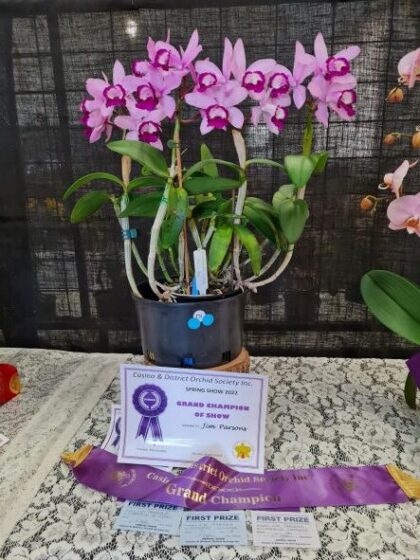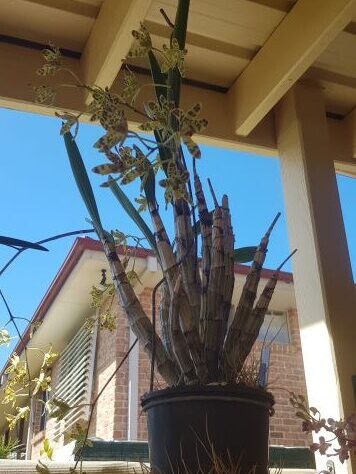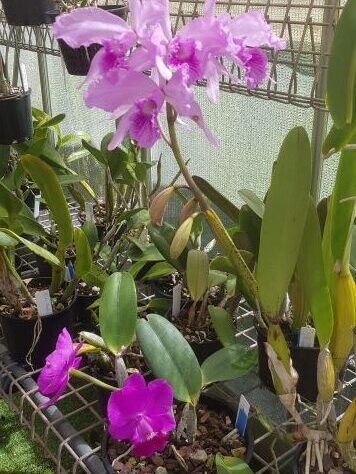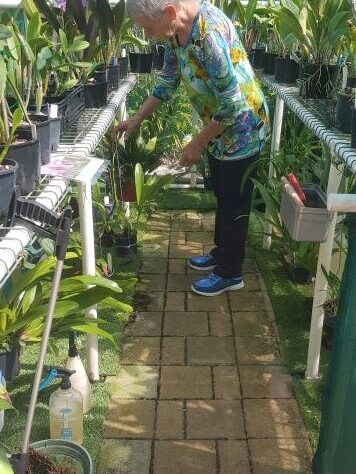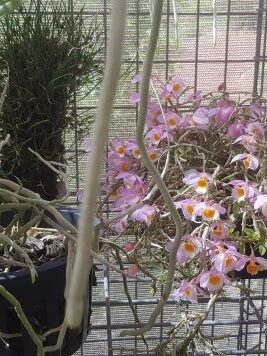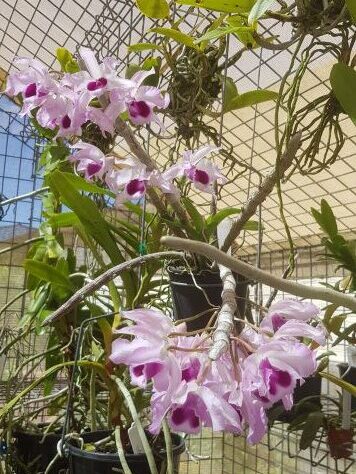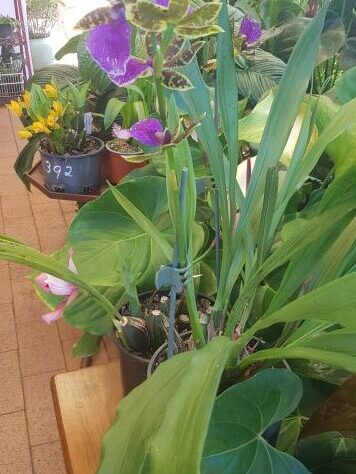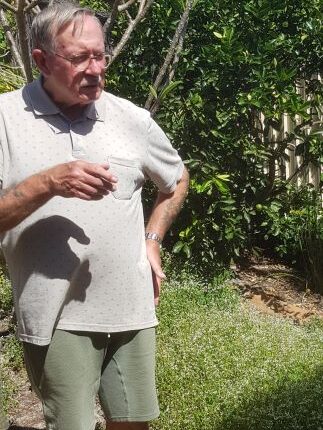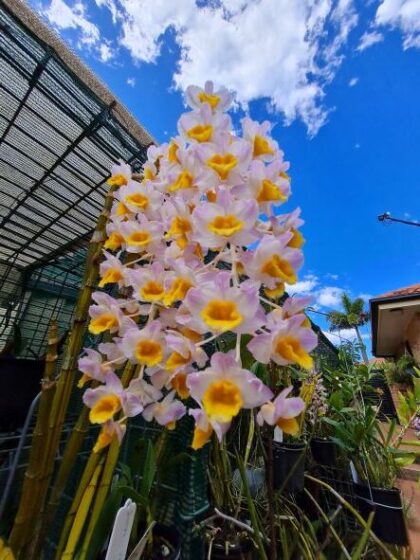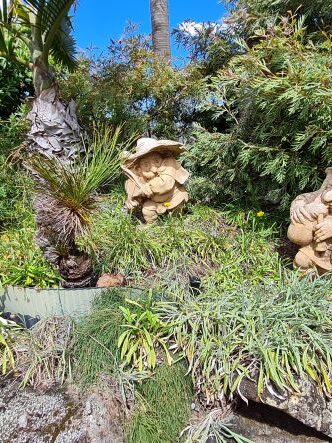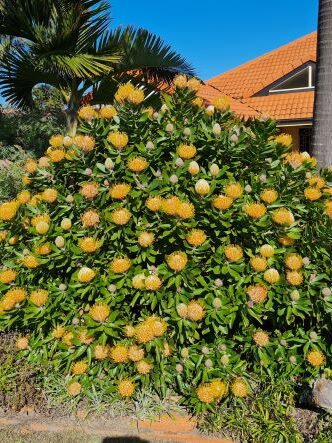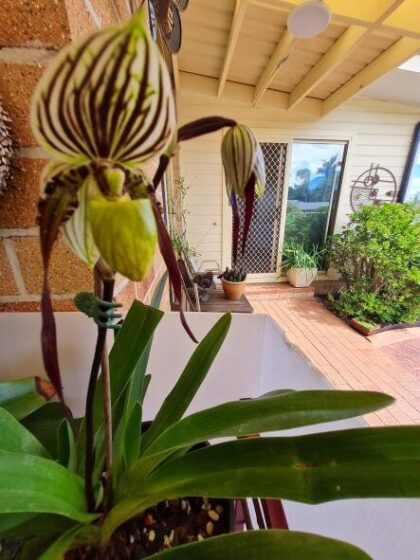Thank you for attending our open garden on 5 November. Although the morning was overcast and raining by mid-morning the clouds started to clear and the weather was very mild and sunny, perfect for wandering around and studying our yard.
We have been living here in lovely Ballina for nearly 10 years and when we moved in the yard was covered with Golden Cane Palms and there was some bits of green stuff that was sticking out of the sandy soil…we found out that this was supposed to be lawn, do we decided that we should get rid of the palms and put in gardens and tunnel houses so that Jim can tend to his orchids, which is his passion – my passion (ha ha) is pulling out weeds and, let me tell you it’s a full time job. I also love creating leadlight lamps.
I love the area we live in, which is close to Angels Beach and seeing what can be achieved by trial and error. The error that I made BIG time is trying to establish a veggie patch, everything went well for a few weeks, but when I was ready to harvest some of the crops, e.g. lettuce, spinach etc. I found big bites taken out. The blighter that was causing this was the biggest brown grasshopper that I have ever encountered. The only way to get rid of them is to chop off their heads (Marie Antoinette style). I found that it was cheaper to buy the veggies and so out with the patch and in with flowers and shrubs. Now I have a few Grevilleas (one that I love: Dorothy Gordon, its Robyn Gordon’s sister) which attract the variety of birds around this area.
The other visitors that we have are various blue tongue lizards, water dragons and, of course, the snakes – green ones, pythons and the other kind that you stay away from. There is also a wallaby that visits our beach, but you have to be early to get a quick glance. There are lots of brush turkeys around in the bush as well and I am astounded at the amount of work that the males have to do to keep the nest in order!! (as well as the rearing of the young, so I’m told).
What makes me happy? I love walking on the beach at sunrise and coming home to my weeds who welcome me with open arms.
Those of you who couldn’t make it to the open garden, here are some photos of orchids, potted colour and some of my quirky collection of statues and my leadlight masterpiece.
Julia
